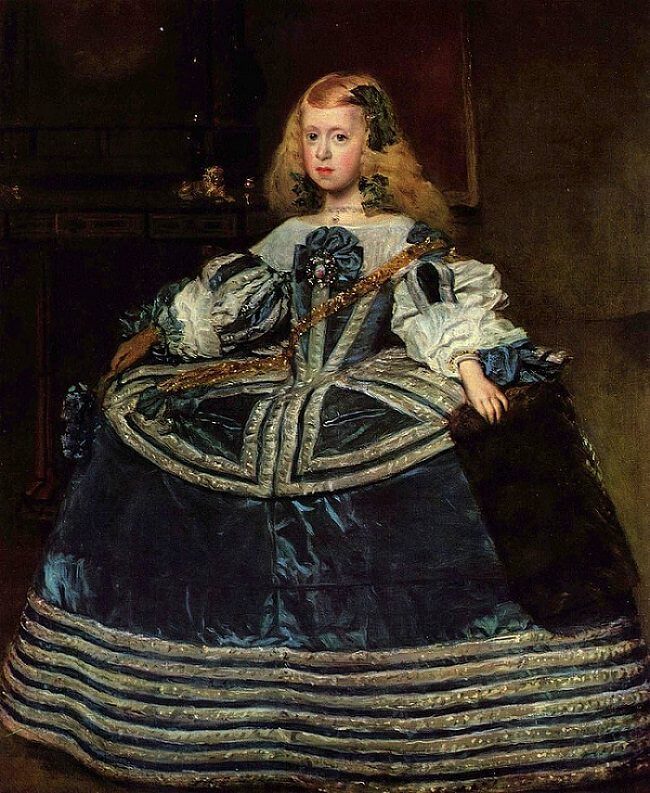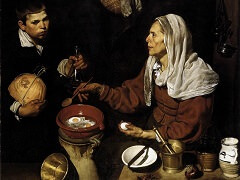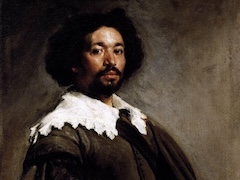Infanta Margarita Teresa in a Blue Dress, 1659 by Diego Velázquez

This portrait, dating from 1659, which shows the young Infanta Margarita at the age of eight, was once believed lost. In 1923, it was discovered - cut down to an oval, probably during the eighteenth century - in the storeroom of the Kunsthistorisches Museum in Vienna. Careful but major restoration in 1953 returned the painting to its original dimensions.
This work reveals the diversity of Velázquez's talent and style as a portraitist. Indeed, the roughly sketched-in right hand, barely visible in the shadow, as well as the sleeve of the dress are not that far removed in terms of technique from the style of Frans Hals, Velázquez's Dutch contemporary, or the art of Manet. However, the freer treatment of the face and the more finished left hand are reminiscent of Pierre-Auguste Renoir.
The beauty of the formal dress, with its reflections of light, its shadows, and rich surfaces; the silver-gilt braid that sets off the deep blue of the velvety fabric; the dark brown tones of the r ight portion of the canvas; and finally the long chain, golden like the young Infanta's hair - all these elements combined proclaim not only Velázquez's exceptional gift for painting but, especially, his unique skill as a colorist. Velázquez's deliberate choice of a single, dominant color, which he elaborates upon by developing delicate gradations with extreme refinement, brings to mind the variations upon a single musical theme by Mozart and other composers of genius.
















